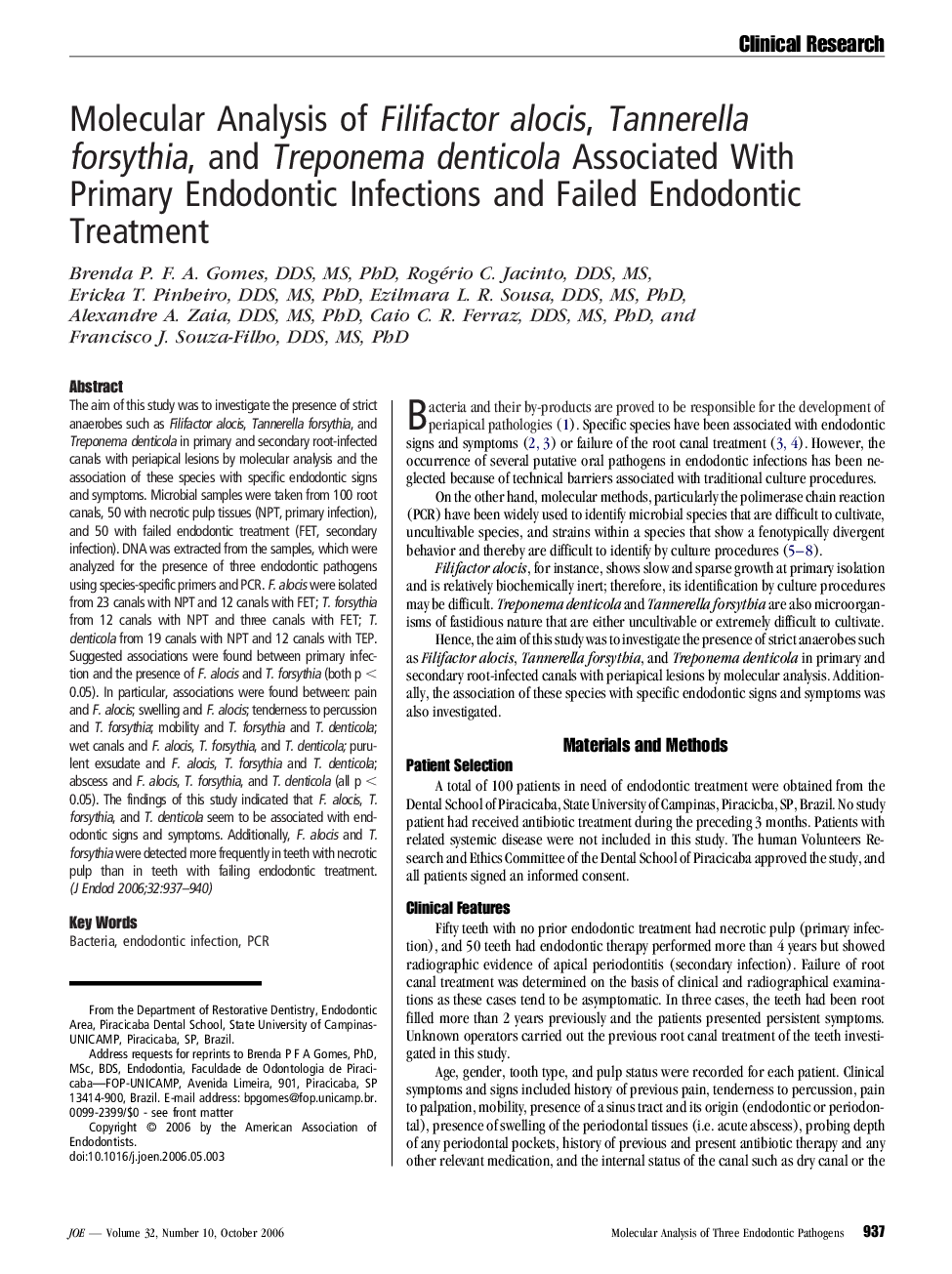| Article ID | Journal | Published Year | Pages | File Type |
|---|---|---|---|---|
| 3150163 | Journal of Endodontics | 2006 | 4 Pages |
Abstract
The aim of this study was to investigate the presence of strict anaerobes such as Filifactor alocis, Tannerella forsythia, and Treponema denticola in primary and secondary root-infected canals with periapical lesions by molecular analysis and the association of these species with specific endodontic signs and symptoms. Microbial samples were taken from 100 root canals, 50 with necrotic pulp tissues (NPT, primary infection), and 50 with failed endodontic treatment (FET, secondary infection). DNA was extracted from the samples, which were analyzed for the presence of three endodontic pathogens using species-specific primers and PCR. F. alocis were isolated from 23 canals with NPT and 12 canals with FET; T. forsythia from 12 canals with NPT and three canals with FET; T. denticola from 19 canals with NPT and 12 canals with TEP. Suggested associations were found between primary infection and the presence of F. alocis and T. forsythia (both p < 0.05). In particular, associations were found between: pain and F. alocis; swelling and F. alocis; tenderness to percussion and T. forsythia; mobility and T. forsythia and T. denticola; wet canals and F. alocis, T. forsythia, and T. denticola; purulent exsudate and F. alocis, T. forsythia and T. denticola; abscess and F. alocis, T. forsythia, and T. denticola (all p < 0.05). The findings of this study indicated that F. alocis, T. forsythia, and T. denticola seem to be associated with endodontic signs and symptoms. Additionally, F. alocis and T. forsythia were detected more frequently in teeth with necrotic pulp than in teeth with failing endodontic treatment.
Keywords
Related Topics
Health Sciences
Medicine and Dentistry
Dentistry, Oral Surgery and Medicine
Authors
Brenda P.F.A. DDS, MS, PhD, Rogério C. DDS, MS, Ericka T. DDS, MS, PhD, Ezilmara L.R. DDS, MS, PhD, Alexandre A. DDS, MS, PhD, Caio C.R. DDS, MS, PhD, Francisco J. DDS, MS, PhD,
